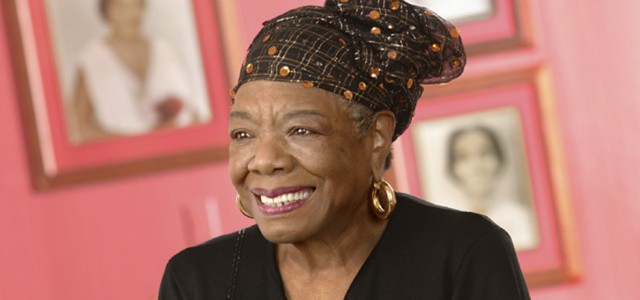The life of Maya Angelou
BORN IN St. Louis in 1928 and raised in Stamps, Ark., Maya Angelou dared to reject the preconceptions of others, choosing instead to define herself. Words were her tools, and she wielded them with expert precision, even when those words came from others.
Her brother discarded her given name, Marguerite, and called her Maya. She polished that name, placed it upon her head and wore it like a crown.
In 1951, she defied societal restrictions to marry a Greek sailor named Enistasious Tosh Angelos. Then she flouted convention once more to pronounce his name in a way that suited her.
Maya Angelou dared to reject the preconceptions of others, choosing instead to define herself. Words were her tools, and she wielded them with expert precision.
“Angelou,” she said. “Maya Angelou,” and the name—a moniker she chose for herself—became synonymous with excellence, and with vision, and with words.
Words, you see were her tools, and when it suited her, she used them sparingly.
As a child she refused to speak for a time. I believe her silence was driven not only by the pain of childhood sexual abuse, which she outlined in her memoir, “I Know Why The Caged Bird Sings.” Her refusal to speak was also a reflection of her reverence for words. She understood, even as a child, that words could be as powerful when they were withheld as they were when they were spoken.
The might of Maya Angelou
But oh, what might she shared when she finally decided to speak. She released her pain and her joy, her dreams and aspirations, allowing them to burst forth like rainbows.
Maya Angelou, in short, lived and wrote in such a way that her story arc stretched across the sky, splashing vibrant, beautiful colors on a world that wanted to see itself in black and white.
Her life was the illustration of her poem, Phenomenal Woman. Her resonant voice embodied the hope and pain of her poem, Woman Work. Maya Angelou, in short, lived and wrote in such a way that her story arc stretched across the sky, splashing vibrant, beautiful colors on a world that wanted to see itself in black and white.
She used her words to narrate the struggle for Civil Rights, to become the Poet Laureate, to announce the inauguration of a president, and to push each one of us to succeed.
Maya Angelou wanted us to be more, to reject complacency, to recognize our inner beauty. She breathed life into dreams we didn’t even know we had, and told us, in no uncertain terms, that we ourselves were dreams; that our very existence was hope.
The legacy of Maya Angelou
Her poem, And Still I Rise, was in many ways, her seminal work, because it embodied the pain of struggle and the triumph of the human spirit. In that poem, she told us—all of us—that we are as wide and as deep as anything this world has to offer.
“I’m a black ocean, leaping and wide,
Welling and swelling I bear in the tide.
Leaving behind nights of terror and fear
I rise
Into a daybreak that’s wondrously clear
I rise
Bringing the gifts that my ancestors gave,
I am the dream and the hope of the slave.
I rise
I rise
I rise.”
Maya Angelou’s words were jewels plucked from the muck and mire of an unforgiving world. She chiseled away the ugliness that made them dull, and found the beauty inside.
Even now, though Maya Angelou is gone, her words rise. And I, and every one of us, rise with them. ![]()
 Solomon Jones is an Essence bestselling author and award-winning columnist. He is the creator and editor of Solomonjones.com. Click here to learn more about Solomon
Solomon Jones is an Essence bestselling author and award-winning columnist. He is the creator and editor of Solomonjones.com. Click here to learn more about Solomon







